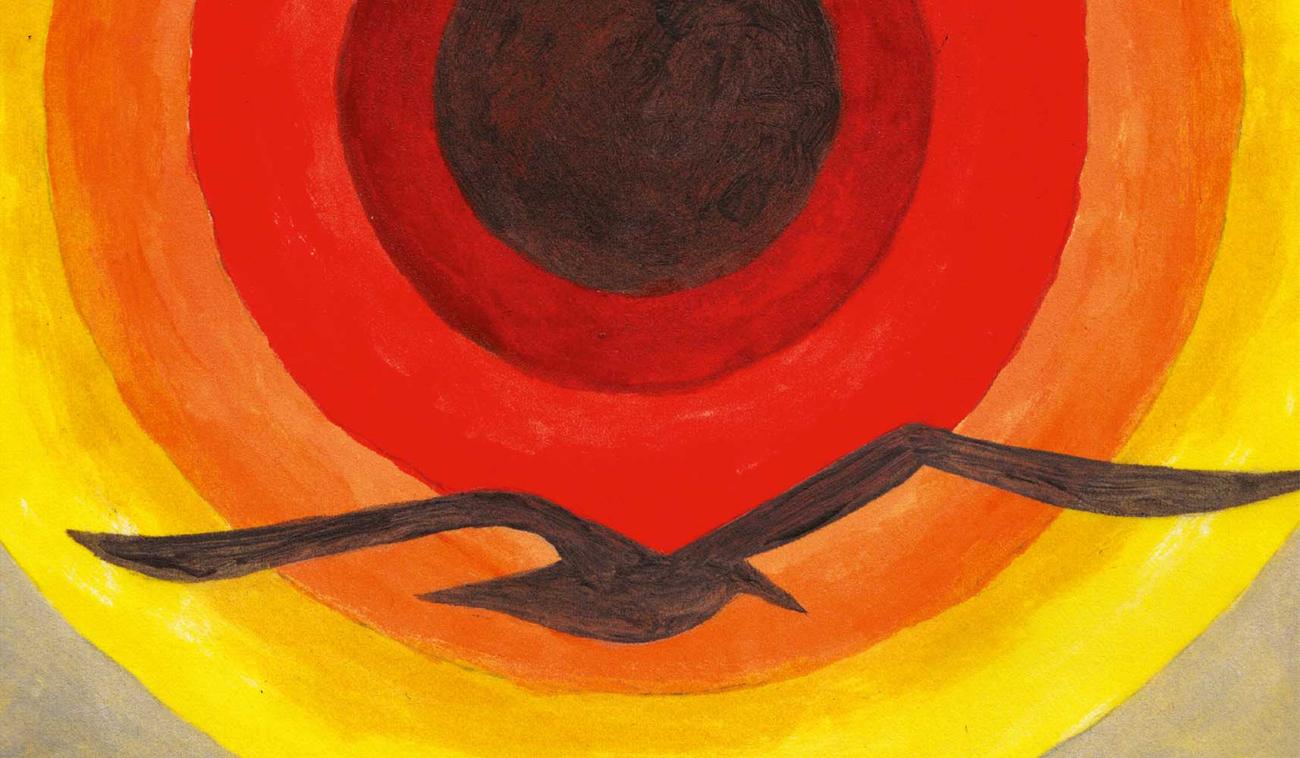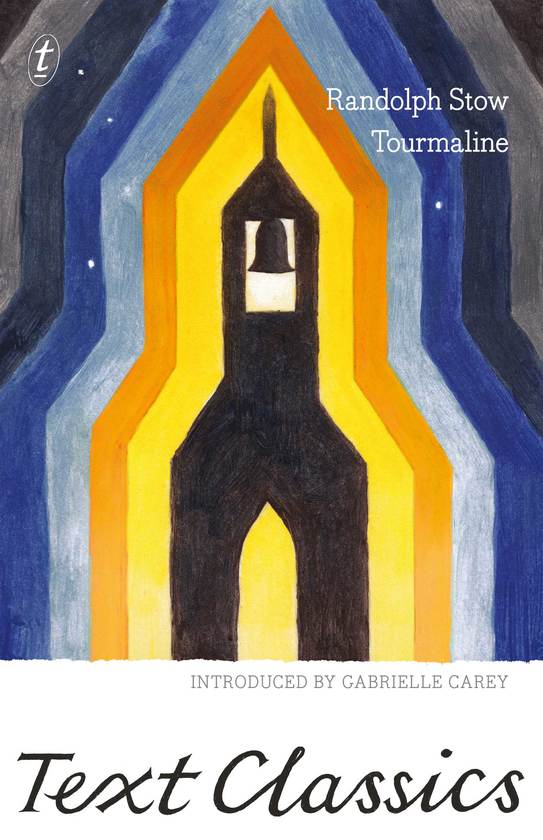
This month we’re excited to be publishing no less than five Randolph Stow novels in the Text Classics series, all with new companion essays. Below, in her introduction for To the Islands, Bernadette Brennan reveals why thirty years after first reading the book she remains ‘captive to its power’. For a broader look at Stow’s legacy, read Nicolas Rothwell’s excellent feature in the Australian.
STRANGE COUNTRY
by Bernadette Brennan
Randolph Stow was only twenty-two when he published To the Islands, the haunting tale of an aged missionary on a self-destructive, self-pitying journey towards death. The novel won the Miles Franklin Literary Award in 1958, a year after the inaugural award was given to Voss. You can draw a link between these two novels: not because, as some critics have mistakenly suggested, Stow was working in Patrick White’s shadow, but because both books marked a dramatic shift in Australian writing. White and Stow eschewed realism, sending their protagonists on existential journeys into country that was at once the Australian interior and the tortured landscape of the mind.
To the Islands opens with the old missionary, Stephen Heriot, being roused by an intensity of sound and sensation:
A child dragged a stick along the corrugated-iron wall of a hut, and Heriot woke. His eyes, not yet broken to the light, rested on the mud-brick beside his bed, drifted slowly upwards to the grass-thatched roof. From a rafter an organ-grinder lizard peered sidelong over its pulsing throat.
Oppressed by its thatch, the hot square room had a mustiness of the tropics...Outside, the crows had begun their restless crying over the settlement, tearing at his nerves. The women were coming up to the kitchen. He could hear their laughing, their rich beautiful voices.
The day’s heat is bearing down. Heriot’s books are disintegrating, under attack from insects and mildew. He is exhausted, depressed. His first words, declaiming Baudelaire to the lizard, announce his world-weariness: ‘The sixty-seventh year of my age. Rien n’égale en longueur les boiteuses journées—’ (nothing’s as long as the limping days). Quotations from Baudelaire’s Les fleurs du mal are a form of shorthand in the book to signify questions of doubt and grief, weakness and self-disgust.
Heriot has lost his faith. He rails against a sense of futility and wants to tear down the mission he has devoted his life to building. In his confusion, fury and arrogance he smashes a crucifix, announcing, Lear-like: ‘I believe in nothing.’ Nothingness, in its many manifestations, tolls throughout the novel.
Stow wrote To the Islands after working for some months in 1957 as a ration storeman at the Anglican-run Forrest River Mission, in the far north of Western Australia. Having learned something of the culture, spirituality and language of the Umbalgari people, he sought to honour them, while also affirming what he saw as the important work being done by white Christian missionaries for Indigenous communities in remote Australia. In the 1981 revised edition of To the Islands, Stow removed some of the more heavy-handed ‘propaganda’ that celebrated the missionaries’ role, but considered the rest of the text ‘salvageable’. We should be thankful for that assessment, given that he had banned the reprinting of his two earlier novels, A Haunted Land (1956) and The Bystander (1957). To the Islands, by contrast, has almost never been out of print.
The setting and the focus on Aboriginal culture was groundbreaking in mid-twentieth-century Australian literature. While contemporary readers may baulk at some of Stow’s descriptions and the way Heriot co-opts the Umbalgari language for his corroboree, Stow was one of only a handful of white writers who sought to portray Aboriginal characters with depth and complexity. Katharine Susannah Prichard’s Coonardoo (1929) and the books of Xavier Herbert, Vance Palmer and Eleanor Dark went some way to giving Indigenous characters a voice, but it was not until the late 1950s that Stow, White and Judith Wright brought this concern to the literary mainstream.
The Onmalmeri massacre, based on the actual Umbali massacre of 1926, haunts To the Islands. Heriot, who seeks to atone for the historical atrocities of colonialism, instead realises his own culpability. In a fit of rage he casts a stone at Rex, thinking him killed. Disconsolate, he sets out on a journey to ‘the islands’ of the Aboriginal dead. Like so many heroes of European literature, he must experience exile in order to reconcile with himself and with his place in the world.
To the Islands is suffused with poetry. While Heriot quotes Gerard Manly Hopkins’ ‘Spring’, it is Hopkins’ great sonnet of religious doubt and despair, number forty-one, that best reflects Heriot’s predicament:
O the mind, mind has mountains; cliffs of fall
Frightful, sheer, no-man-fathomed. Hold them cheap
May who ne’er hung there...
The monumental, ‘rocklike’ Heriot is physically and spiritually a ‘crumbling cliff’. With the help of his trusted Aboriginal friend Justin, he traverses the rugged country of north Western Australia, with its lush vegetation, teeming wildlife, gushing streams and massive red cliffs. But the most difficult cliffs he must negotiate are those in his mind. Stow projects Heriot’s psychic drama of pride and guilt, atonement and eventual self-discovery onto the canvas of country. The novel progresses through a series of cinematic, cross-cutting scenes. Time and space pull together, then dance apart.
Early critics of Stow’s work were troubled by the way he sought to fuse the symbolic and the real, privileging thought and emotion over action. For Stow, however, spirit and land—the internal and the external environments—are indivisible. He explained in Westerly in 1978:
The boundary between an individual and his environment is not his skin. It is the point where mind verges on the pure essence of him, that unchanging observer that for want of a better term we might call the soul. The external factors, geographical and sociological, are so mingled with his ways of seeing and states of mind that he may find it impossible to say what he means by his environment, except in the most personal and introspective terms...The environment of a writer is as much inside him as in what he observes.
In 2013, while researching an article about To the Islands and Heriot’s quest, I raised with Roger Averill, Stow’s authorised biographer, the idea of Stow’s extreme sensitivity, his heightened appreciation of his environment. Averill responded:
I have long thought that Stow lacked a few layers of skin, allowing him to experience landscape and nature more directly and with greater sensitivity than most of us...I do think the idea of being stripped, at least to the skin, if not deeper, does relate to Heriot and his final declaration. To reach ‘the islands’ and his realisation that his soul is a strange country, Heriot has to be stripped of everything, of all his cultural certainties.
Heriot is highly educated. On his journey he quotes or alludes to a raft of classics: the Bible, Dante’s Inferno, Everyman, Marlowe’s Doctor Faustus, The Pilgrim’s Progress, Shelley’s ‘Ozymandias’, Coleridge’s Rime of the Ancient Mariner, T. S. Eliot’s The Waste Land; and Greek, Latin, German, French and Spanish poetry. Perhaps erudition blinds Heriot to any genuine understanding of himself and his place in the world. Only by shedding that learning, that way of seeing and thinking, can he approach true knowledge. Like David Malouf’s Ovid in An Imaginary Life, Heriot eventually reaches a state of mind beyond language and intellectual understanding: a state of heightened intuitive perception and openness to experience. He discovers the landscape of his soul, a horizon of possibility.
As Stow’s prepositional title indicates, this novel is more concerned with the journey than the destination. There can be no doubt, however, that the Stow scholar Anthony J. Hassall was correct when he noted, in Australian Book Review in 2009, that the closing scene of Heriot ‘alone on a cliff above the Arafura Sea, confronting the strangeness of his soul and looking out towards the Aboriginal islands of the dead, is one of the unforgettable images of Australian literature’. Do the islands exist? Does it matter? Has Heriot found peace? Stow withholds certainty, offering open-endedness over resolution.
Earlier, Heriot and the murderer Rusty debate the possibility of an unforgiving God. When Rusty suggests that God ‘pays us back for what we done’, Heriot insists: ‘We pay ourselves back...Because you know our crimes are like a stone, a stone again, thrown into a pool, and the ripples go on washing out until, a long time after we’re gone, the whole world’s rocked with them.’ As his final act of will, Heriot hurls a boulder into the sea below. While one man may not be able to atone for the sins of a nation, he could set in motion ripples of thought that may reverberate after his death. The novel’s true conclusion may yet lie somewhere far in the future.
I remember first reading To the Islands as an undergraduate in the 1980s. I was amazed at how Stow managed to evoke such beauty and majesty in landscape and people while narrating a tale of such pain and anguish. Like so many readers, I am haunted by the final vision of Heriot and perplexed by his last utterance. Over the years I have taught this novel to hundreds of students and, therefore, had cause to reread it multiple times. Thirty years after my initial encounter with To the Islands, I remain captive to its power.
Revisiting the manuscript of this novel in 1981 an older Stow remarked: ‘Nowadays I should hardly dare to tackle such a King Lear–like theme; but I do not regret having raised the large questions asked here, and so wisely left unanswered.’ He pondered that perhaps the novel retained some interest ‘because this story of an old man is really about a certain stage in the life of a sort of young man’. Today, the reverberations of Heriot’s hurled stone continue long after the covers of this extraordinary novel are closed.
BERNADETTE BRENNAN is a former senior lecturer in the Department of English at the University of Sydney. Her publications include a monograph, Brian Castro: The Seductive Play of Language, and two edited collections, Just Words?: Australian Authors Writing for Justice and Ethical Investigations: Essays on Australian Literature and Poetics. She is writing a literary biography of Helen Garner and her work.
The Girl Green as Elderflower, introduction by Kerryn Goldsworthy
The Suburbs of Hell, afterword by Michelle de Kretser
To the Islands, introduction by Bernadette Brennan
Tourmaline, introduction by Gabrielle Carey
Visitants, introduction by Drusilla Modjeska







